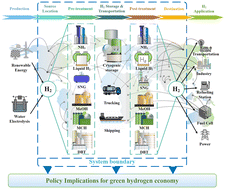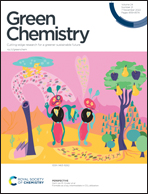Global transportation of green hydrogen via liquid carriers: economic and environmental sustainability analysis, policy implications, and future directions†
Abstract
Green hydrogen is increasingly recognized as one of the most promising options to decarbonize the energy and transport sector to achieve the goal of climate neutrality, but its low volumetric density presents significant challenges that need to be addressed. Because of their ease of handling and transportability, liquid carriers such as liquid organic hydrogen carriers (LOHCs) and ammonia are particularly appealing. This work presents a comparative sustainability analysis of three liquid carriers: liquid hydrogen, liquid ammonia, and synthetic natural gas, and the three promising LOHCs (methanol, di-benzyl toluene, and methylcyclohexane), based on rigorous economic and environmental evaluations. The overall results indicate that by 2050, the promising carriers for small- to medium-level market penetrations (i.e., 50 000 kg d−1) would be ammonia and methanol, with levelized costs of 3.60 and 3.78 $ per kg H2, respectively, while that for high-level market penetrations (i.e., 57.1 Mt per year) is LH2 with a levelized cost of 2.12 $ per kg H2. LH2 is a promising carrier from an environmental perspective because it does not have an energy-intensive dehydrogenation stage. Finally, policy implications are presented as these necessitate the development of a strategic policy framework around the globe to comply with the legal requirements set forth by the United Nations, such as the Paris Agreement and Sustainable Development Goals.



 Please wait while we load your content...
Please wait while we load your content...